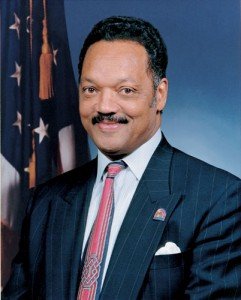In NFL, Equality Needed On the Field and Off
Jesse Jackson | 9/13/2019, 8:33 a.m.
The National Football League season opened last weekend with a full slate of games. On the field, extraordinary athletes of all races and backgrounds competed with the same set of rules. Yet it is worth noting that this has not always been the case -- and that the legacy of discrimination has yet to be redressed.
In June, when the Chicago Bears announced that their "throwback jersey" for their 100th anniversary this year would come from 1936, they were honoring a jersey that was worn in the third season of the NFL's 12-year ban on black players.
In an extraordinary article for Windy City Gridiron, Chicago Sports historian Jack Silverstein detailed the story and background of the ban. Unlike baseball, the NFL allowed black players to play in its early years. Black players like All Pro halfback Fritz Pollard and Tackle Duke Slater were among the most honored players of the day. "What makes the NFL so unique is that it's a full-fledged league and it starts off integrated," says professor, author and historian Louis Moore, whose work includes the podcast The Black Athlete.
Yet, when the Great Depression deepened, black players were suddenly banned from the league. The owners -- led by George Preston Marshall, owner of the Washington Redskins and, Silverstein postulates, likely George Halas, famed owner of the Chicago Bears -- clearly enforced a ban on black players that lasted from 1933 to 1945. The argument apparently was that with the Depression, black players would be resented -- the football version of last hired, first fired.
The Washington owner, Preston Marshall, writes Silverstein, was an "avowed, gleeful racist," who generally bears the onus of pushing the ban. He hoped to market the Washington team as the team of the South. But other owners, including legends in the sport, were complicit or worse, including Chicago's Halas, Curly Lambeau of the Packers, Tim Mara of the Giants and Art Rooney of the Steelers. Mara's Giants didn't have a black player until 1948, Halas' Bears not until 1952, Lambeau's Packers not until 1950. Marshall's Redskins were the last to integrate, doing so only in 1962 when the federal government threatened to revoke the lease on the team's stadium.
Today, NFL rosters are integrated. But there's still a dearth of blacks in the elite club of owners. Of the 32 teams in the NFL, only two principal owners are people of color -- Shahid Khan of the Jaguars and Kim Pegula of the Buffalo Bills. (Of the 92 teams in baseball, basketball and football combined, there are only six majority owners that are people of color.) Ownership is a small club, and the club owners still tend to admit only people that look like them. The exclusion is also a legacy of the discrimination. When black players -- and black owners -- were banned, teams were affordable. As the league built up, many teams were inherited, gaining in value along the way. By being excluded at the start, black owners have a far harder time getting in now.
Today's integrated teams on the field serve as positive examples. Fans cheer for favorites by the color of their jersey's not the color of their skin. That players of all races and backgrounds play by the same set of rules exemplifies the equal justice under the law that we strive for.
But equality on the field should parallel equality in management and ownership. The NFL should start by acknowledging the racial ban it enforced, recognizing black players and moving more of them into the Hall of Fame and taking concrete steps to ensure that the ownership, management and coaching of NFL teams reflect the diversity of the players on the field and the fans in the stands.
(You can write to the Rev. Jesse Jackson in care of this newspaper or by email at jjackson@rainbowpush.org. Follow him on Twitter @RevJJackson.)




